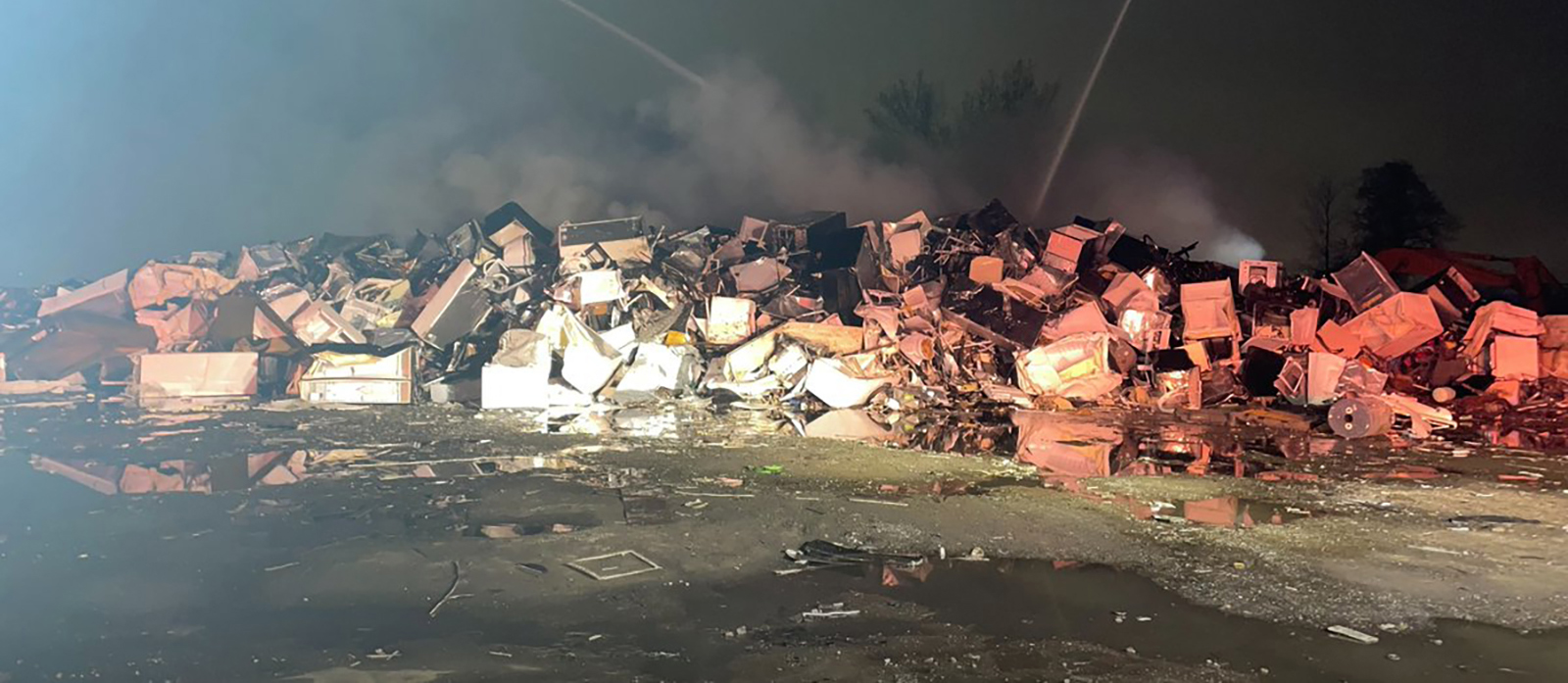Lead Paint From Water Towers Found Buried Deep
September 25, 2013
PROVIDENCE — A study of data from hundreds of soil samples taken around old water tower sites in southern Rhode Island found that even when lead levels on the surface are low, concentrations can sometimes be greater at depths down to a foot. These findings will help improve efforts to assess the effect of lead paint from old water towers on surrounding properties.
The recently published analysis of soil samples from 31 properties was led by Brown University Superfund Research Program researchers at the request of the state Department of Health (DOH).
Prior to 1978, the exterior of municipal water towers were painted with lead paint. Most of these large elevated tanks weren’t well maintained. Over time, the lead paint either peeled/flaked off or was physically removed. As a result, lead likely settled on adjacent properties.
In one particularly case, lead-paint contamination from an old water tower caused significant strife between local residents, municipal officials and state officials. The Brown University Superfund Research Program study was largely initiated by this contentious situation.
In September 2003, Westerly officials notified residents that its 70-year-old water tower was going to be replaced. In January 2004, the state Department of Environmental Management (DEM) notified town officials that the site and residential properties surrounding the tower had a “soil-lead hazard” — lead concentrations greater than 400 milligrams per kilogram were found.
Four months later, town officials notified residents of DEM’s findings. The delayed notification and absence of a physical barrier to restrict public access to the contaminated site angered residents.
Some residential properties near the Westerly water tank become contaminated, leading to investigations that highlighted differences in the standards of DOH and the DEM. One key difference between the regulations is whether they require looking at depths below the soil surface to determine whether remediation is required. DEM requires that, but DOH does not.
Bob Vanderslice, toxicologist for the DOH, said the department asked the researchers to conduct the study based largely on questions posed by Westerly residents living near town’s old water tower.
“Residents questioned the effectiveness of the soil sampling methodology used to investigate the contamination,” he said. “Core samples up to two feet deep are used by the DEM to investigate environmental contamination. The top one inch of soil is sampled by the Department of Health to investigate lead contamination of residential properties that pose risks of childhood lead poisoning.”
The Brown University Superfund Research Program study confirms DEM’s methodology and will now guide that of DOH, according to Vanderslice.
“The results of this study indicate that concerns about the DEM methodology were not warranted. The DEM sampling methodology correctly identified all properties that needed remediation,” Vanderslice said. “The study provides recommendations for the Department of Health to consider in revising its Rules and Regulations for Lead Poisoning Prevention, including to evaluate soil standards to ensure that they protect children from reaching blood levels of five micrograms per deciliter, the more recently adopted level of concern, and to ensure that the sampling methodology adequately addresses the possibility that surface soil samples may not identify lead hazards at depth.”
The main finding of the nine-page study, published in the journal Science of the Total Environment, is that solely looking at surface contamination would have missed higher lead concentrations at lower depths in soil core samples from four of the 31 properties. In other words, samples on 13 percent of the properties could have been classified by DOH standards as “lead-safe,” when higher-than-lead-safe concentrations lurked 6 to 12 inches beneath the surface. DOH defines lead-safe as a lead concentration of less than 400 milligrams per kilogram.
Since multiple samples were taken on each property, no property was ever actually misclassified, according to the study’s lead author, Brown University researcher Marcella Thompson. In all, the study considered data from 498 samples, including 348 with soil at depths of 6 and 12 inches.
Thompson said the findings are important because the health stakes of exposure to lead are so high. Lead exposure has known neurobehavioral and neurodevelopment consequences for people and animals. The greater the exposure, the greater the potential for harm, particularly to children.
“Especially when you are talking about children’s health and the health of the people who live there, one mistake is one too many,” Thompson said. “If there is a potential for [misclassification] to occur, we should take the more conservative route.”
According to Thompson, the study shows that significant amounts of lead were sometimes able to accumulate as far as 400 hundred feet from the water towers. The direction-specific patterns she and her co-authors observed suggest that wind carried paint flakes over those distances.
“In general it became rather apparent which way the wind blew,” she said.
Thompson said the study provides a good example of how policies, even those built upon sound scientific evidence and theory, can still be further informed by real-world field assessment.
“There’s always a need for continued improvement in how we determine the extent of contamination,” Thompson said. “The Department of Health wanted to make quality improvements based on feedback from the community. That’s why we were asked to do the study.”
The study’s recommendations for future contamination monitoring efforts in Rhode Island include sampling soil at multiple depths and farther away than 200 feet, depending on prevailing winds and tower height. The authors also call for state agencies to sample from properties around other old water towers, to adopt more uniform definitions of terms and to update standards to reflect new stricter exposure guidelines from the U.S. Centers for Disease Control and Prevention.
The study was conducted in summer 2012 and was peer reviewed.
Categories
Join the Discussion
View CommentsRelated Stories
Your support keeps our reporters on the environmental beat.
Reader support is at the core of our nonprofit news model. Together, we can keep the environment in the headlines.
We use cookies to improve your experience and deliver personalized content. View Cookie Settings



